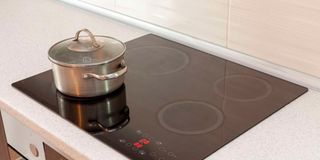Is electricity too expensive for cooking? Well, not really

An electric cooker. The recently released Kenya Renewable Energy Association Energy Price Index found that it is cheaper to cook using electricity than LPG.
Many are encouraged to cook with anything but electricity at home. The fear of tokens disappearing or huge bills is not entirely unfounded. Older electric cooking devices like the familiar hotplate were highly inefficient and consumed excessive amounts of power.
Back then, it was almost laughable to imagine a world in which cooking a meal with electricity from start to finish could cost less than popular cooking fuels like charcoal or kerosene. In fact, for those of us with mixed fuel stoves, we would sooner pause cooking activities to refill the gas cylinder than switch to using the hotplate portion of the cooker.
Cooking with inefficient electrical appliances can add to the cost of living. But modern energy-efficient appliances can make cooking with electricity cheaper. The recently released Kenya Renewable Energy Association Energy Price Index found that it is cheaper to cook using electricity than LPG.
Energy-efficient appliances
The findings build upon other research, such as the World Bank’s “Cooking with Electricity: A Cost Perspective” report, which compared the costs of cooking with electricity with other popular fuels in four countries, including Kenya. It concluded that many Kenyan households could save money by adopting energy-efficient electric cooking appliances and that in Nairobi, cooking all your food with electricity is already much cheaper than charcoal.
The Kenya eCookbook shows how the electric pressure cooker (EPC) is seven times cheaper than charcoal. An electric hotplate has a similar cost to charcoal but the EPC uses seven times less electricity. Since the publication of the eCookBook, the logging ban pushed charcoal prices even higher, and the prices of kerosene and LPG have also increased. Meanwhile, the cost of power is still roughly the same—at around Sh17 per unit for lifeline customers and Sh22 for regular households.
An impact assessment from a programme that supported the sale of 5,000 EPCs in the Kenyan market found that 35 per cent of customers reported a notable decrease in overall household expenses and improved savings after acquiring the EPC. It reads: “The cost has gone down from buying a sack of charcoal at Sh1,450 to now spending an extra Sh150 on electricity”— Customer featured in “Uses & Impacts of Electric Pressure Cookers, Insights from Kenya”, Efficiency for Access Coalition and 60 decibels.
Upfront cost
However, one may raise concerns about the upfront cost, especially for the modern energy-efficient appliances that can enable you to make big savings in the long run. After all, a typical ceramic charcoal stove may sell for Sh500 and an EPC Sh5,000. Fortunately, there are an increasing number of options that are now available. There are organisations that sell EPCs on credit while others are piloting pay-as-you-go schemes with smart electric cooking appliances that can be locked out if customers haven’t kept up with repayments.
So, while you may have saved money by sticking to charcoal, you’re likely to miss out on a significantly more affordable option if you continue to ignore the array of digital cooking technologies available.
Ms Onjala and Mr Leary work for the Modern Energy Cooking Services Programme, which is funded through the UKAid. [email protected]





